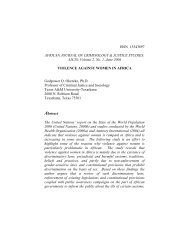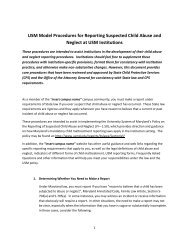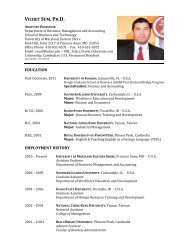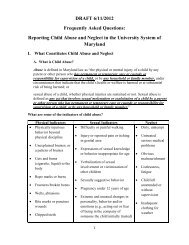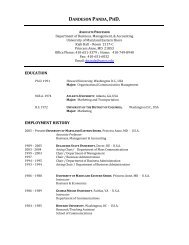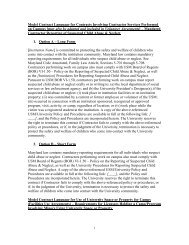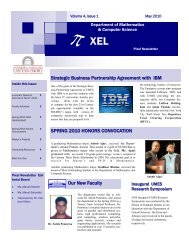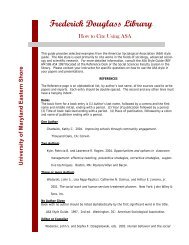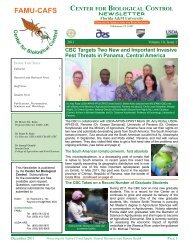Download - University of Maryland Eastern Shore
Download - University of Maryland Eastern Shore
Download - University of Maryland Eastern Shore
Create successful ePaper yourself
Turn your PDF publications into a flip-book with our unique Google optimized e-Paper software.
SBA-5.2<br />
SBA-5.3<br />
SBA-5.4<br />
SBA-5.5<br />
BS<br />
BS-1<br />
BS-1.1<br />
BS-1.2<br />
BS-1.3<br />
BS-1.4<br />
BS-1.5<br />
BS-1.6<br />
BS-2<br />
BS-2.1<br />
BS-2.2<br />
BS-2.3<br />
BS-2.4<br />
BS-2.5<br />
BS-2.6<br />
Apply patient- and population-specific data, quality assurance strategies, and<br />
research processes to identify and resolve public health problems, develop drug<br />
use and public health policy, and to design pharmacy benefits.<br />
Assess the health needs <strong>of</strong> a specific patient population by analyzing epidemiologic<br />
data and identifying risk factors that would adversely affect patient health.<br />
Develop and implement population-specific, evidence-based disease management<br />
programs and protocols based upon analysis <strong>of</strong> epidemiologic and<br />
pharmacoeconomic data, medication use evaluation and risk reduction strategies.<br />
Analyze access to and formulate a plan for providing effective, quality health and<br />
disease prevention services.<br />
Basic Sciences<br />
Biomedical Sciences<br />
For human organisms, describe structural components, functions and interactions<br />
at molecular, cellular, organ system and organismal levels.<br />
Describe the mechanisms by which local, regional and organismal control<br />
mechanisms regulate the functions <strong>of</strong> cells, organs and organ systems to maintain a<br />
normal dynamic steady state.<br />
List the major diseases, describing deviations from normal anatomy, physiology and<br />
biochemistry, and predicting typical pathological consequences.<br />
Describe the scientific principles that explain how nonpharmacologic interventions<br />
(e.g., diet, exercise, and other life-style modifications) can prevent disease and<br />
promote patient health.<br />
Explain the fundamentals <strong>of</strong> infectious disease, host-organism interactions, hostorganism<br />
differences, organism pathogenicity, clinical aspects <strong>of</strong> infection, and<br />
epidemiology.<br />
Describe the use <strong>of</strong> molecular biology to produce therapeutic agents.<br />
Pharmacology and Medicinal Chemistry<br />
Classify and describe drugs based on chemical structure and mechanism <strong>of</strong> action.<br />
Recognize fundamental pharmacophores; describe and apply structure activity<br />
relationships to drug-receptor interactions.<br />
Describe the biological, chemical and physical factors that affect stability,<br />
absorption, distribution, metabolism and elimination <strong>of</strong> traditional, alternative and<br />
complementary medications.<br />
Recognize and explain the pharmacodynamic, pharmacokinetic and chemical<br />
interactions associated with a drug product’s active and inactive ingredients,<br />
including interactions with other drugs, food, diagnostic tests, and monitoring<br />
procedures.<br />
Identify and describe the mechanisms and treatments for adverse reactions,<br />
allergies, side effects and iatrogenic or drug-induced illnesses.<br />
Define basic terminology and tools used in pharmacogenomics/genetics.<br />
111




